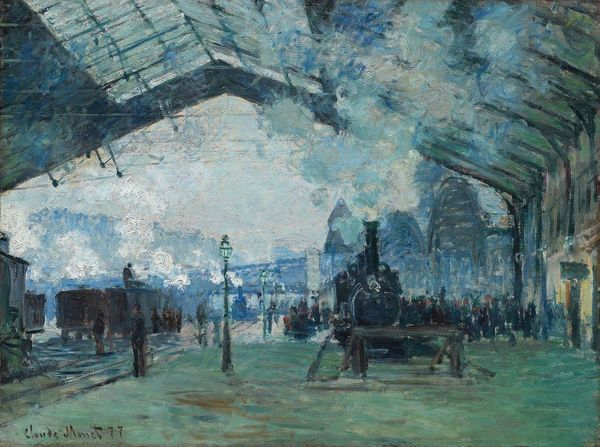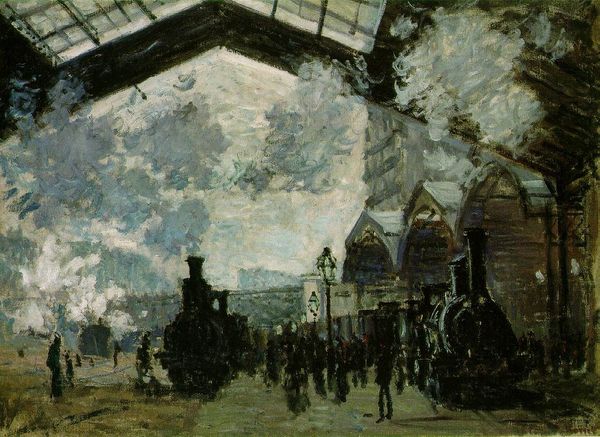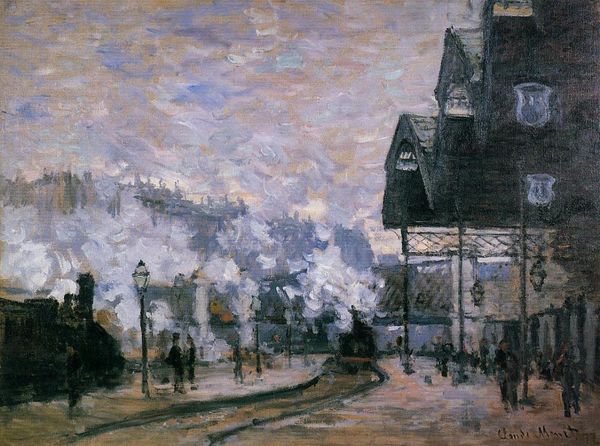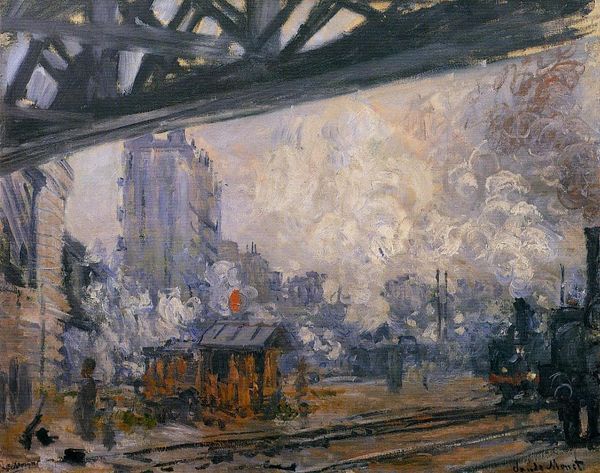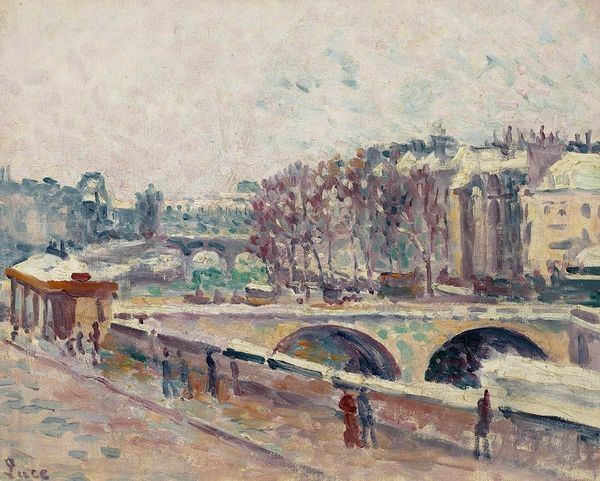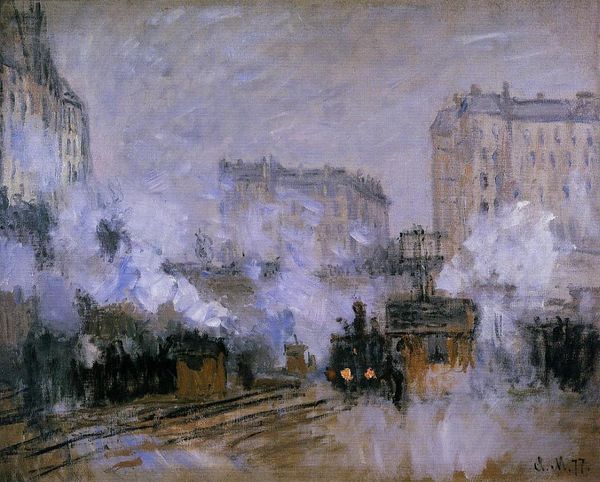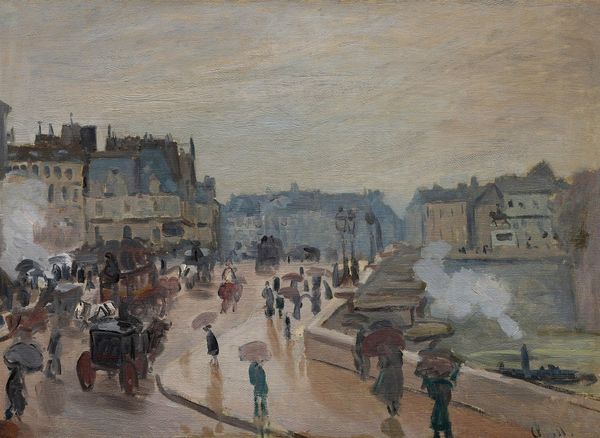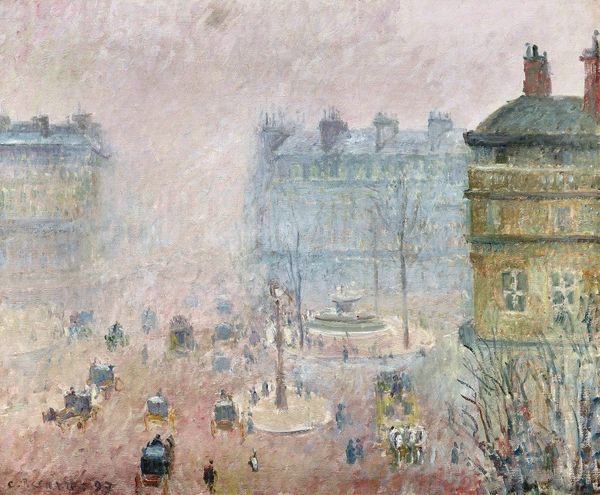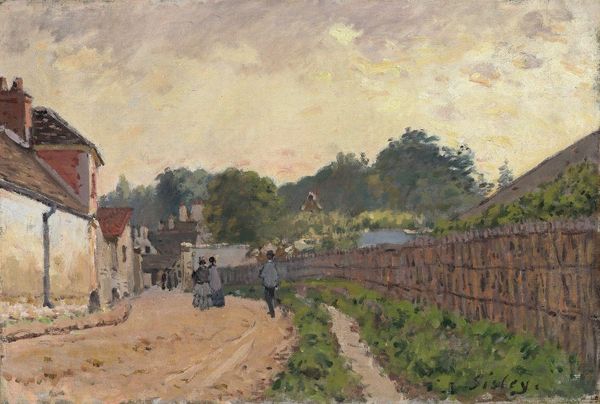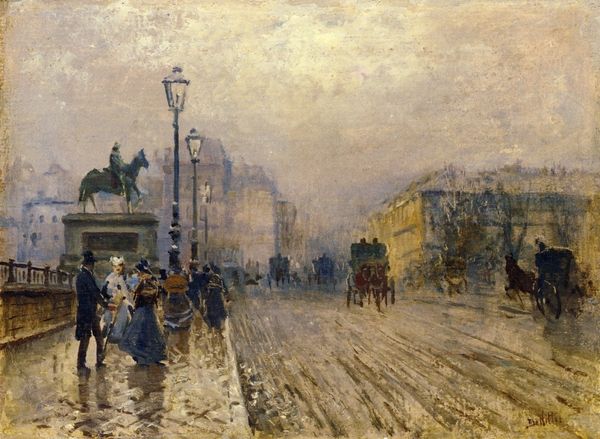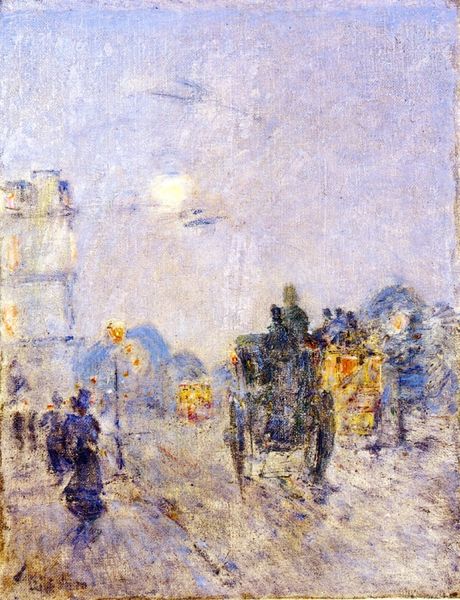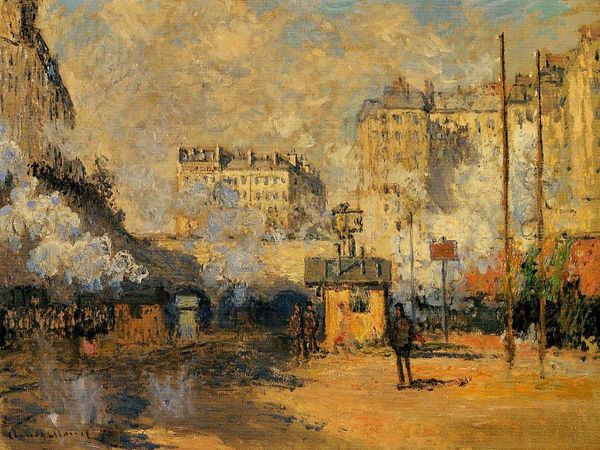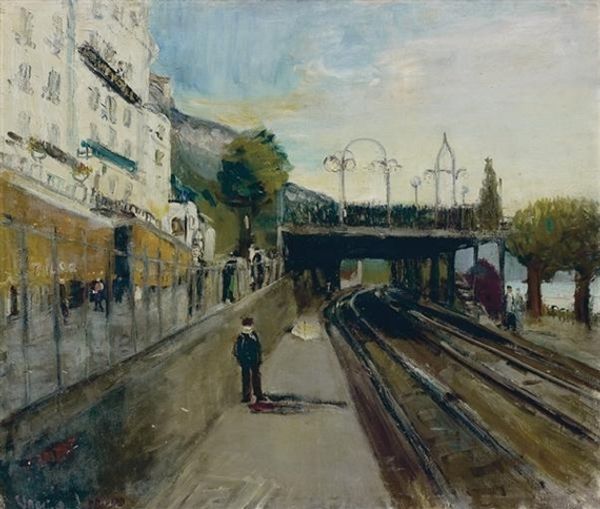
painting, plein-air, oil-paint
#
painting
#
impressionism
#
plein-air
#
oil-paint
#
landscape
#
cityscape
Copyright: Public Domain: Artvee
Curator: Welcome, everyone. Today we'll be discussing Claude Monet's "The Saint-Lazare Station," painted in 1877. It's a key example of his Impressionist style. Editor: My initial reaction? A haze, an ethereal moment captured, like peering through a dream. It's less about the station itself and more about the fugitive qualities of light and steam. Curator: Indeed. Monet wasn't necessarily interested in accurately depicting the station's architecture, but in exploring the interplay of light, color, and atmosphere. Look how he uses broken brushstrokes to render the billowing steam. Editor: The steam almost dissolves the solid structures, creating a tension between industrial power and fleeting ephemerality. This focus on modernity is so interesting given the socio-political backdrop. The industrial revolution's impact on urban life... Curator: Precisely! The Saint-Lazare station itself was a symbol of modern Paris, a transportation hub embodying progress and change. Monet submitted several canvases of the station to the third Impressionist exhibition in 1877. It was quite a radical move, painting a train station. Editor: The choice of subject is a statement in itself. It moved art away from idealized landscapes and classical themes, firmly planting it in the contemporary world. Consider the societal implications of this image during this era. It marks a crucial transition. Curator: A very good point. The perspective Monet creates through his compositional arrangement of steam, architecture, and even the figures lends itself to a reading of movement and of that transformative shift you mention. I am quite drawn to his exploration of complimentary colours within what appears to be a monochromatic scheme, like those pale yellows with violet, very beautiful. Editor: It truly makes a viewer consider the implications. Ultimately this impression is not static; its composition generates an enduring sense of the movement associated with progress, travel, and social flux. It has profoundly shifted my perspective. Curator: As has mine. Thank you for accompanying me as we analysed this pivotal painting.
Comments
No comments
Be the first to comment and join the conversation on the ultimate creative platform.
